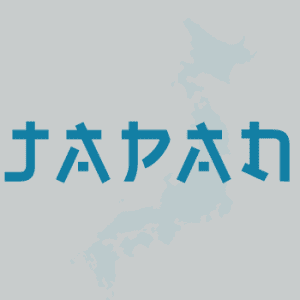How to Spell Your Name in Japanese?

A name is an integral part of one’s identity, so whether you apply to work in Japan or want to be respectful of the culture and heritage, it’s essential to learn how to spell your name in Japanese correctly. Luckily, there are a few simple rules that can make this process relatively straightforward. Keep reading to learn how to spell your name in Japanese correctly!
Read the Kanji
Japan has three writing systems, one of which is Kanji, characters borrowed initially from China but eventually formed into its unique writing system. Thousands of distinct Kanji exist, and users select each one depending on the context.
Many first-generation immigrants have difficulty with the language because they can’t read or write it; if you’re planning on visiting Japan (or trying your name in Japanese), learning how to pronounce individual Kanji is an excellent place to start, as well as using kanji dictionaries for translation.
If you don’t know where to begin, try looking up common names like John or Mary. Writers will write the most common words in hiragana, an alphabetical character set that is phonetic. You may also find your name written in katakana, another phonetic alphabet that uses more minor characters than hiragana.
If you’re lucky enough to see your name written in Kanji, note how many strokes it takes to write out each character—the more strokes a character has, the more complicated it is to write and say. Also, note whether there are alternate readings for your name—it might be worth memorizing them so you can show off!

Determine which readings are available.
There are two different ways to spell your name in katakana, as well as which syllables will be used. The first and most basic way is by listing each katakana character for each of your syllables. The second option, which can look a bit more interesting, is to spell out the pronunciation of your name phonetically. If you choose option two and if you have an unusual or uncommon name, it can often be easiest to find someone with that same name who already uses their name in Japanese (their social media accounts will be an excellent resource for finding these people).
From there, see what they’ve done and follow their lead! You may also want to try both methods and see which one looks better. You could even use one way for formal correspondence (such as business cards) and another method for casual correspondence (such as emails or text messages). Know these too: What is the difficulty for certified Japanese translation services? That might help you, too.
However, if you decide to go about it, make sure you practice writing your name repeatedly until you feel comfortable enough to start using it regularly. You may also want to test yourself by trying your name on various websites in Japanese characters before deciding on a particular reading combination—this can help ensure that you pick something easy to read rather than something that might be difficult when written out longhand.

Decide what syllables you want.
There are three basic rules you can follow when deciding how to spell your name in Japanese. First, you want to double a consonant if there’s already one at that point; otherwise, leave it be.
This will give you カタカナ — katakana, or a phonetic rendering of your name. Second, if you want to use hiragana instead of katakana, add a small か (ka) before each syllable.
For example, アリンか becomes ありんか, which is pronounced A-ri-n ka. Lastly, if you have more than two syllables (or don’t like either of those options), write out each syllable in hiragana.
You can adjust spacing and punctuation for aesthetics. Examples of “Ryan” include: ロイヤル, ライアン, and ライアーン. Choose what suits you!
To write your name in Japanese, the easiest way is to find a Katakana letter that corresponds to the sound of your name. For example, if your name is John, you would look for the Katakana letter “ジョン.”
When writing your name in Katakana, keep in mind the correct stroke order and how some letters change based on their position.
When writing your name in Katakana, remember the correct stroke order for each letter to ensure accurate appearance.
Katakana is a phonetic alphabet, so use the correct letters to match the sounds in your name, like “ジョン” for John.
Pick Your Reading
There are a few steps involved when you’re trying to translate your name into katakana (Japanese’s phonetic alphabet). First, check whether your name is one syllable or two and find a letter combination that works for you. Next, learn how all those phonetic symbols work. Finally, use what you’ve learned to give your name a Japanese twist—it’s more than just writing it in katakana!
Be sure you spell your name exactly as it sounds; otherwise, people might have trouble figuring out who you are and may even mispronounce your actual name. If you want to add an honorific like -san or -chan at the end of your name, do so after you’ve written it in katakana. Here are some examples: if your name is Daniel Smith, try writing it as ダニエル・スミス (danieru sumisu).
If Daniel Smith were a woman named Jessica Jones, she would write her name as ジェシカ・ジョーンズ (jeshika joonzu). When using English names with honorifics in Japan, drop them altogether if they don’t apply. For example, Ms. Jones would become ジェシカ (jeshika) once she had dropped her title.

Write it out and practice.
The first thing you need to do is write out your name. You can get a rough approximation of how it will be spelled by writing all kana on one line. Once you’ve done that, retake a look at your name, paying attention to where there are kanji and kana.
It might help to draw boxes around each section. Once you have a good idea of how things are divided up, try practicing it! If you know someone who knows some Japanese (or if you have an old textbook lying around), give them your name and ask them to spell it for you. Try repeating after them until they feel confident they’re saying your name correctly.
If neither of those options is available, try looking up online translators or typing in how do I say [your name] in the Japanese language? Into Google Translate!

What are the Letters of the Japanese Alphabet?
There are four letters in the Japanese alphabet- A, I, U, and E. These four letters are pronounced differently than their English counterparts. In addition, there are two ways to write each letter- in hiragana and katakana. Hiragana represents the traditional writing style, while katakana serves for words of foreign origin.
- You pronounce A like the “a” in “father,” and you write it as あ in hiragana and ア in katakana.
- You pronounce I like the “i” in “machine,” and you write it as い in hiragana and イ in katakana.
- You pronounce U like the “u” in “flute,” and you write it as う in hiragana and ウ in katakana.
- You pronounce E like the “e” in “bed,” and you write it as え in hiragana and エ in katakana.
There are also two ways to write each letter- in hiragana and in katakana. Hiragana is the more traditional way of writing, while katakana is used for words of foreign origin.
- Hiragana is written as あ in hiragana and ア in katakana.
- Katakana is written as あ in katakana and ア in hiragana.
The Japanese alphabet is also known as the “gojūon.” Gojūon means “the fifty sounds.” This is because there are fifty sounds in the Japanese language. The Japanese alphabet is also unique because it is not based on the Latin alphabet.
Say it Out Loud
When you say your name in the Japanese language, most of it will be relatively simple. However, if your name is John Smith, there are a few things you have to keep in mind. First of all, nearly every foreign name that ends with an S has a Z sound at the end of it instead.
The same goes for words like Smith. If you have an ending that begins with a vowel and then an S, there are two ways of pronouncing it: as さ or サ, depending on what fits better with your last name. In short, say your name out loud and follow what feels natural. If you’re unsure, ask someone fluent in Japanese for guidance.
Frequently Asked Questions
In Japanese, “What is your name?” translates to “Anata no namae wa?” (formal) or “Namae wa?” (casual). Choose formality if unsure.
Yes, you can change your name in Japan by submitting a request at your local city hall with required documents and a fee.
Yes, Japanese people commonly shorten names by using the first two syllables of a given name, like “Kazuo” to “Kaz.”
No, you don’t need a Japanese name to live in Japan, but many people choose one to integrate better into the community.
To spell your name in Japanese, use Katakana, breaking it into syllables and finding the matching Katakana characters.




